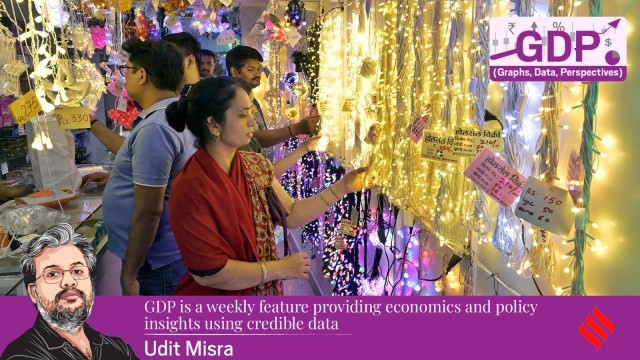Description
_RULES,_2020.png)
Copyright infringement not intended
Context: The Union Power Ministry announced amendments to the Electricity (Rights of Consumers) Rules, 2020, and the changes included the introduction of time-of-day (ToD) tariff provisions.
Details
- Power tariffs are the prices that consumers pay for electricity. They are determined by various factors, such as the cost of generation, transmission, distribution, and other charges.
- Power tariffs can vary depending on the time of the day, reflecting the changes in demand and supply of electricity. This is known as differential time-of-day (TOD) power tariffs.
- Differential TOD power tariffs have been implemented in many countries, such as the UK, France, Germany, Australia, and India
Objective
- The main objective of differential TOD power tariffs is to encourage consumers to shift their electricity consumption from peak hours to off-peak hours, thereby reducing the peak load on the grid and improving its efficiency and reliability.
- Differential TOD power tariffs can also help to integrate more renewable energy sources into the grid, as they can match the variable output of solar and wind power with the flexible demand of consumers.
Features that distinguish them from flat or uniform tariffs
Different rates for different times
- They have different rates for different time blocks within a day, such as a peak, off-peak, and shoulder periods.
- The peak period is usually during the morning and evening hours when the electricity demand is high, while the off-peak period is usually during the night when the demand is low. The shoulder period is between the peak and off-peak periods when the demand is moderate.
- The rates for peak periods are higher than those for off-peak periods, creating an incentive for consumers to shift their consumption to cheaper times.
TOD power tariffs can be dynamic or static
- Dynamic tariffs change in real time according to the market conditions and signals from the grid operator, while static tariffs are fixed in advance and announced to consumers. Dynamic tariffs can better reflect the actual cost of electricity at any given time, while static tariffs can provide more certainty and simplicity for consumers.
TOD power tariffs can be mandatory or optional
- Mandatory tariffs apply to all consumers in a certain category or region, while optional tariffs allow consumers to choose whether to opt in or opt out of them.
- Mandatory tariffs can ensure a higher participation rate and a larger impact on load shifting, while optional tariffs can respect consumer preferences and avoid potential backlash.
Significances
- Differential TOD power tariffs have several significances for both consumers and producers of electricity.
For Consumers
- For consumers, differential TOD power tariffs can help them save money on their electricity bills if they can adjust their consumption patterns according to the tariff rates.
- For example, they can use appliances such as washing machines, dishwashers, and electric vehicles during off-peak hours when the rates are lower.
- They can also benefit from improved quality and reliability of electricity supply, as differential TOD power tariffs can reduce the risk of blackouts and brownouts due to overloading of the grid.
For producers
- Differential TOD power tariffs can help them optimize their generation mix and reduce their operational costs.
- For example, they can use cheaper and cleaner sources of electricity such as solar and wind during off-peak hours when the demand is low, and use more expensive and polluting sources such as coal and gas during peak hours when the demand is high.
- They can also avoid investing in costly peaking plants that are only used for a few hours a day.
Challenges
Lack of awareness and understanding
- Lack of awareness and understanding among consumers about how differential TOD power tariffs work and how they can benefit from them.
- Many consumers may not be aware of the existence or availability of differential TOD power tariffs in their area or may not know how to access or use them.
- They may also have misconceptions or doubts about the fairness or accuracy of differential TOD power tariffs, especially if they are dynamic or mandatory.
Lack of infrastructure and technology
- Lack of infrastructure and technology that can enable or facilitate differential TOD power tariffs.
- For example, many consumers may not have smart meters that can measure and record their electricity consumption at different times of the day or communicate with the grid operator or supplier.
- They may also not have smart appliances that can automatically respond to price signals or user preferences and adjust their operation accordingly.
Lack of regulation and coordination
- Lack of regulation and coordination among different stakeholders involved in differential TOD power tariffs.
- For example, there may be conflicts or inconsistencies between different levels of government or between different sectors or regions regarding the design or implementation of differential TOD power tariffs.
- There may also be resistance or opposition from some interest groups or segments of society that may perceive differential TOD power tariffs as unfair or detrimental to their interests.
Therefore, there is a need for a comprehensive and coherent strategy to overcome these challenges and promote differential TOD power tariffs as a viable and beneficial option for both consumers and producers of electricity.
Some possible steps that can be taken are:
- Raising awareness and education among consumers about differential TOD power tariffs through various channels such as media, social networks, community groups, etc.
- Providing incentives and support for consumers to adopt differential TOD power tariffs, such as subsidies, rebates, discounts, rewards, etc.
- Developing and deploying infrastructure and technology that can enable or facilitate differential TOD power tariffs, such as smart meters, smart appliances, smart grids, etc.
- Establishing and enforcing clear and consistent regulations and standards for differential TOD power tariffs across different levels of government and sectors or regions.
- Engaging and collaborating with different stakeholders involved in differential TOD power tariffs, such as producers, suppliers, regulators, consumers, etc.

Conclusion
- Differential TOD power tariffs are a promising tool for improving the efficiency and sustainability of the power sector in India. It can help consumers save money on their electricity bills, reduce greenhouse gas emissions, enhance power quality and reliability, and support renewable energy integration. However, it also requires careful planning and execution to overcome the challenges involved in its implementation. The amendments to the Electricity (Rights of Consumers) Rules, 2020 are a positive step towards this direction but more efforts are needed from all stakeholders to make the ToD tariff a success story in India.
Must Read Articles:
Electricity (Amendment) Rules, 2022: https://www.iasgyan.in/daily-current-affairs/electricity-amendment-rules-2022
Power Sector: https://www.iasgyan.in/daily-current-affairs/power-sector
https://indianexpress.com/article/explained/explained-economics/differential-time-of-day-power-tariff-impact-8688235/




_RULES,_2020.png)
_RULES,_2020.png)


